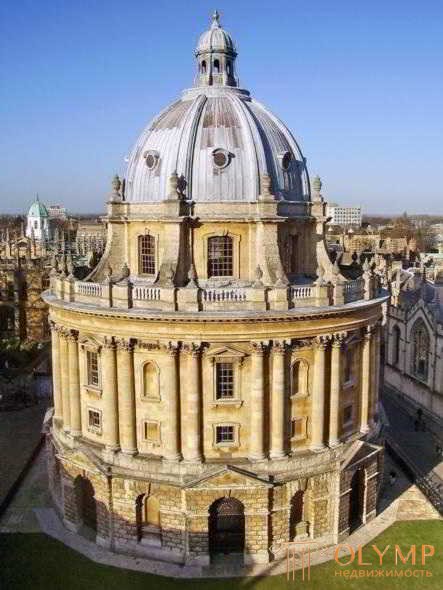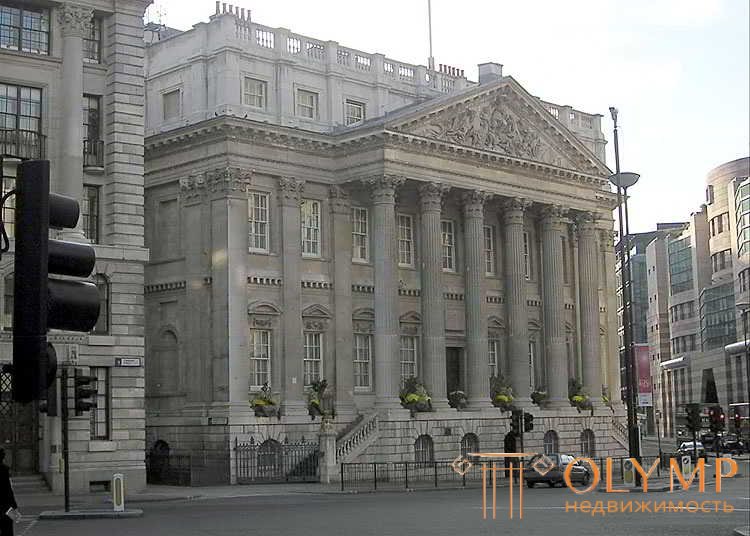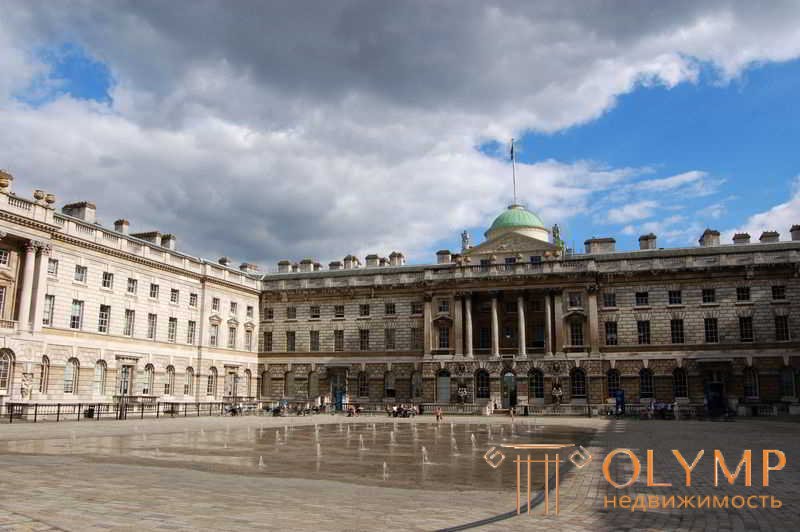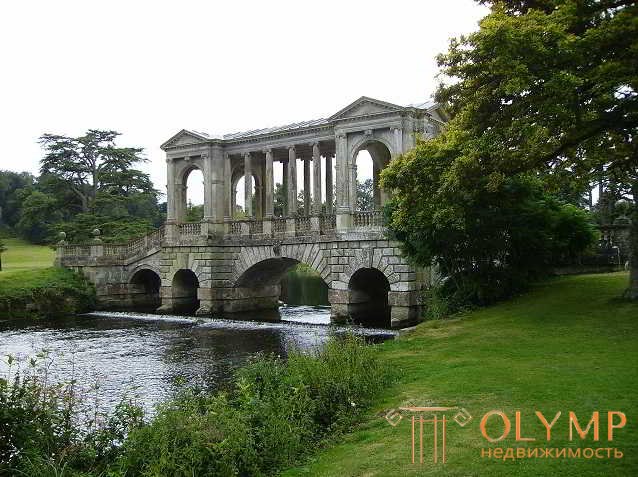
1. General overview of the development of English architecture
As the influence of England on the world stage increases, English art begins to take the first place. The architecture did not develop as quickly as other areas, while maintaining a commitment to the styles of the 17th century.
During the 18th century, in the field of the visual arts, the powerful island kingdom won the great power situation that it had long possessed in the field of public life, science and poetry. In architecture, however, stubbornly keeping to the national traditions created by Jones and Wren, English art only retained the old positions. In sculpture, it remained still independent. But on the other hand, in painting, it has now become such a success on its own feet, that it was his creations in this area that acquired world artistic fame for themselves.
True Baroque English art was touched only slightly, the French rococo it almost did not hurt. On the contrary, neoclassicism found a highly fertile ground for its development in England. Already in 1722, Jonathan Richardson emphasized the distinction between Roman copies and Greek originals, and in 1726 the first volume of Athens Antiquities, by Stewart and Rivette, appeared in London, around which, according to Stark, “the fruitful work of two subsequent generations to study Greek world. " It was stated above that attempts to revive the medieval Gothic came out of England and that for the first time here, however, only in some cases, they began to imitate Chinese architectural and garden forms.
True, contrary to the efforts of Stuart and Rivette, the English architecture of the 18th century remained essentially Palladian, in other words, Roman in the spirit of the Italian late Renaissance, understood in the same way as Jones and Ren. Further destinies of this style, which adorned not only churches, but also secular buildings with Roman gables, porticos, connected the individual floors, i.e., between the basement, decorated in rustic, and the roof balustrade, through one large order of pilasters, and central buildings covered with high domes, we can trace only briefly, in his most important works and masters to the end of the century.
The student Vanbro Thomas Archer (died in 1743) had for the Englishman a very pronounced tendency towards Baroque. His church of sv. Phillip in Birmingham (1710) is remarkable for its remarkable, as if from one piece of a lined dome tower with concave sides and obliquely angled paired pilasters of Corinthian style. Church of sv. John in Westminster (1721–1728) possesses a broken pediment typical of Baroque.
A follower of Gauksmura John James (died in 1745) was the builder of the classical church in the spirit of Palladio. George in Hanover Square in London, known for its column Corinthian portico, crowned with a pediment, quickly made up his name.
Colin Campbell (died in 1734), the author of the work “British Vitruvius” (“Vitruvius Britannicus”), built, among other things, for Sir Robert Valpol the country house of Gucton Hall in Norfolk County, decorated in the corners with four domes, and Palladian Villa Merworth, in Kent, representing the faithful imitation of the “Round Villa” (“Villa rotonda”) of Palladio near Vicenza.
William Kent (1685 to 1748), who, like Campbell, was patronized by influential philanthropist Lord Burlington, built a park facade, richly decorated with some tiles, and Horseonards Gaulem Haus in London, as well as the stern Devonshire House in London. in Norfolk. He is known as the creator of a new, free English garden art, which, too often suffering from a lack of style, has taken the place of the French architectural garden style. As an architect, he was the forerunner of strict antiquarian classicism. The turn to nature and the return to the antic went in this way, and in England, hand in hand.

Fig. 230. James Gibbs. Redcliffe Library at Oxford
The most prominent architect of this circle, James Gibbs (1674–1754), studied in Rome with Carlo Fontana Jr. In their church buildings, for example, in the two-story Church of Our Lady in Strand in London (1714–1717), made in the style of rich Baroque, or in a more classical one-story building, with a Corinthian gable portico and a tower obelisk of “St. Martin in the Fields ”(1722), now in Trafalgar Square in London, he is still a direct follower of Ren. It is more independent in its secular buildings, such as the Senate building, King’s College in Cambridge and the famous, resembling in appearance mausoleum, Redcliffe Library in Oxford - a round, richly dissected dome structure, the main floors of which are connected by eight pairs of Corinthian columns protruding from the walls three quarters In any case, Gibbs was the last representative of Ren's direction.

Fig. 231. George Dens. Mension House in London
John Vardi (died in 1765), the builder of the beautiful Spencer House on the edge of Green Park in London, with the Doric main floor, six medium columns of which carry a wide triangular pediment, was a student and assistant to Kent. A strict classicism in the spirit of Palladio breathes built by John Wood (died in 1754) impressive, decorated with a Corinthian gable portico of the house Prior-Park in his hometown of Bese (Bath), owes to him and his son his wide planning. On the same ground are George Dense Sr. (died in 1768), whose Mension House in the City of London also has a traditional Corinthian portico, and Sir William Chambers (1726–1796); its huge, somewhat awkward office building (Somerset House) in London, at least in its middle, column part, is made in the Palladian spirit. The same Chambers who traveled around China, however, paid tribute to Chinese taste in his large publications and in the park he had broken at Kew near London, which he decorated with Chinese pagodas; Robert Morris, in his “Palladian Bridge” in Wilton, still holds high the banner of Roman classicism, and his Invereri Castle in Scotland (1745–1761) adjoins the Gothic renovators. Finally, James Pen (1716–1789), whose name is associated with the laying of the false-classic Kedlston Hall castle on Lord Scarsdel’s estate, is likely to be affected by French influence.

Fig. 232. Sir William Chambers. Somerset House in London
With the intention of freeing themselves from the influence of Palladio and Jones, the four brothers Adam made their first appearance, who are therefore also now known as heretics in England. “Great villains” even calls Blomfield. Their father William Adam (died in 1748) planted, on the one hand, Ren’s style in Edinburgh, and on the other, became here, in Scotland, one of the first neogothic heralds, although, as Douglas Castle showed, he understood his the task is too elementary, being contented with round towers, a toothed coronal cornice, lancet windows and roses with the most boring carvings. Of his sons, Robert Adam (1728–1792), who rebuilt and decorated Pena's Kedleston Hall, and his brother’s activities, James Adam (died in 1794), sought to bring a new life into the location of their many London private houses, and, following Stuart and Rivette, in the base of the ornament we put in place of Roman Greek forms. In London, they built up whole areas, in Edinburgh erected such impressive buildings as the university.

Fig. 233. Robert Morris Palladian Bridge at Wilton
The first neo-Gothic home in England is built by Horace Walpole Straffberry Hill (1766–1770). The use of Gothic forms is limited here only by the inside. How little of the Gothic was understood, despite the fact that in England there were already large works about her, show the gothic fantasies of George Dens Jr. (1740–1825) on his church of St. Bartholomew and on the street facade of the City Hall (Guildhall) in London. With the exception of single Gothic and Chinese deviations, the English architecture of the 18th century presents a strikingly uniform, even monotonous picture. But it was the stylistic integrity of her classicism, combined with great technical perfection, that gave rise to the English architects of this century to consider themselves the first architects in the world. All their judgments leave no doubt in their firm belief that they have found the only possible and correct way for all times.
Что бы оставить комментарий войдите
Комментарии (0)